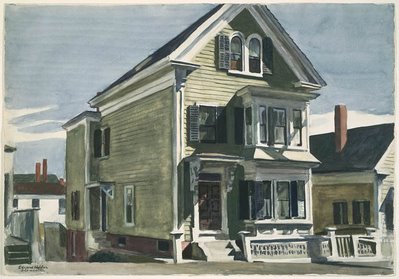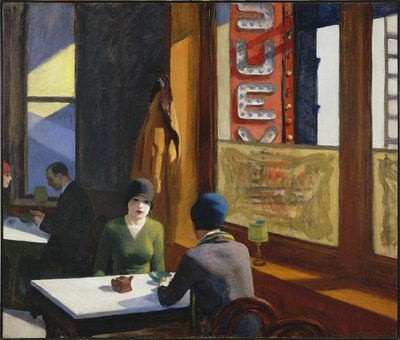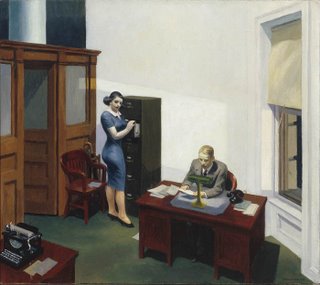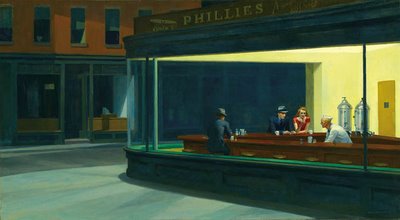
There’s been a lot of huffing and puffing in art circles since a public high school group of walked out of Brooklyn performer Mike Daisey’s monologue “Invincible Summer” at Cambridge’s American Repertory Theater on April 19. Daisey has called the group cowards and fools and idiots – and many, many people have agreed with him since he posted video of the walkout to YouTube.
The incident brings up fundamental questions about artists’ responsibility to their audiences, and vice versa – which I’ll get into in
my next post. But I feel I need to provide this rundown of the incident and critique of Daisey’s response as background.
Daisey had a right to be upset, especially in the charged vulnerable moment of a performance and because of one guy who walked up to the Daisey and silently emptied his water bottle on Daisey’s notes before leaving. But Daisey has overreacted, and remains mean-spirited in his responses. He’s been a terrible sport about all this. And he owes the school group an apology.
Here’s what happened based on the Globe’s intrepid
Geoff Edgers' reports,
Playbill, video of the performance Daisey posted to
YouTube, Daisey’s
blog and the school’s
hometown paper. (Note: I’ve not personally interviewed anyone.)
Some 80 students and 20 chaperones from
Norco High School – located in a city of 27,000 people that local boosters say offers “city living in a rural atmosphere” 50 miles west of Los Angeles – were in Boston for the school choir to sing at the Boston Heritage Music Festival. And school chaperones, which included faculty, in an apparent bit of impromptu behavior decided to expose their charges to some Boston culture by taking them to the theater. They bought tickets to Daisey’s performance on the day of the show.
“Invincible Summer” is a Bill-Cosby-Spalding-Gray-style comedic monologue about New York’s self-congratulatory chutzpah, trying to write a book, the Sept. 11 attacks, and, early on, “fucking Paris Hilton.”
“You’re fucking her, you’re thinking, ‘Oh, my god, oh, my god, I’m fucking Paris Hilton,’” Daisey said that night while rocking his arms as if he was jiggling around atop her. “Paris Hilton is thinking, ‘Oh, my god, oh, my god, I’m Paris Hilton.’”
Many in the crowd laughed. Then the Norco folks quietly walked out. Daisey sat there stunned. And then a guy – one of the chaperones, it turns out – walked up to the table Daisey was sitting at and emptied his bottle of water all over Daisey’s notes. To Daisey, it was the act of a latent Nazi – “It is a face I have seen in Riefenstahl's work,” he later blogged.
Daisey collected himself, then got up and shouted: “Hey do any of you people who are leaving want to stay and talk about this or do you want to run out like cowards?” On the video you can hear a woman off camera saying something like “We really don’t want to hear the F-word.”
“Mam, please take a message back to your people,” Daisey proclaimed. “In the future find out what you’re going to see before you see it.” The remaining audience applauded, drowning out Daisey screaming at the departing crowd – mostly teenagers, mind you – something about: “Do it to my face!” A student tells Playbill: “Many kids were in tears of embarrassment and scared of him.”
Daisey calmed down and bantered wittily with the remaining audience. Someone off camera apparently asked why the people left. Daisey replied jokingly, “Usually terrorists say what they’re doing.” The audience laughed. “I don’t know. There was no statement. They just left. I don’t know. I assume I’ll have a death threat in my email or something.” Then he sat down, still shaken, and slowly settled back into his monologue.
In the aftermath, Daisey has voiced five main complaints:
1. Daisey says the Norco folks should have found out what they were seeing before going to see it.It turns out that the Norco chaperones did due diligence. You can argue about how well they did it – but good luck figuring out if the show is appropriate for school kids based on the
ART’s description, the
Globe review and a chaperone’s conversation with the theater.
Norco principal John Johnson tells Edgers that a chaperone called the ART beforehand: “She said, ‘These are high school kids between 15 and 17. Is this appropriate for them?' According to her, they told her it was appropriate for them and, in fact, there was another high school that was there.”
Edgers reported Thursday that:
Nicholas Peterson, the [ART] marketing associate who dealt with the sale … says he told the Norco representative that Daisey's show contained “strong language, adult situations, powerful and emotional imagery, and also that The New York Times has referred to Mike Daisey as a ‘master storyteller.’”
Peterson says he told the Norco adult that another school group would be attending the performance; it was a senior English class from the private Brooks School in North Andover. And Peterson says he stated that “the imagery is not any worse than what students would see on television and the language no worse than what one would hear at the movies.”
The Norco folks thought this sounded hunkey-dorey. But before Daisey’s show began an announcement was broadcast in the theater: “Turn your fucking cell phones off or we’ll shove them up your ass.” Suddenly they realized the show wasn’t what they thought it would be. Oops. And they concluded that despite their pre-show intelligence being wrong, they didn’t have to stick around to prove exactly how wrong. Daisey in the meantime began monologueing about Paris Hilton.
2. Daisey says the Norco group is “intolerant” and – horrors! – Christian.“It's common to think things will never happen where you are – never in Cambridge, never in New York, never in Seattle,”
Daisey blogged on April 20, the day after the walkout. “Then it happens, right in front of you, and you realize you were blind to it, that you forgot that intolerance and zealotry and viciousness are human currency everywhere, and it takes your breath away.”
Here Daisey is talking about the whole group and misunderstands them.
Try to put yourself in the position of the Norco teachers charged with the welfare of these kids some 3,000 miles from home. Before the show begins there’s the “fucking cell phones” announcement – which surprisingly is not the sort of language used or tolerated by staffers in most high school classes, pep rallies or field trips. How do you respectfully get 100 people to exit this suddenly inappropriate show?
School officials say the Norco choir director asked the theater’s house manager to pause the show so they could leave but was told the show must go on. Edgers reports that: “In the lobby, after some discussion, a plan was hatched by ART staff and the Norco chaperones to have the house lights raised slightly and the group to file out. There was no way to explain this to Daisey, who was visibly rattled when nearly a third of the seats in the theater emptied.”
Daisey and Playbill report subsequently hearing from students who weren’t offended by the performance. That’s probably true for a lot of the students and chaperones. Maybe even most of them. But taking a bunch of high school students to a performance like this – a bit racy, a bit potty-mouthed – is the kind of thing that can get teachers in hot water or even fired. It doesn’t matter if the teachers themselves are liberal or conservative or Christians or atheists. It doesn’t matter if most of the students – and their parents – aren’t offended. Your boss might be offended. Or maybe the right combination of people complain – and it doesn’t have to be a lot of people.
A comment a chaperone apparently made about Christians in the group has Daisey obsessed in subsequent interviews and on his blog with their faith, suggesting their behavior was unchristian. Is this relevant? Is Daisey’s harping on this anything more than a demonstration of anti-Christian biases?
3. Daisey complains that the Norco group didn’t explain itself.The Norco folks tried to respectfully and quietly walk out – well, except for Water Bottle Guy – and Daisey screamed at them. He had a right to be upset right then, but if you’re a student or teacher quietly leaving and this is the reaction you get, why would you stop to talk? (A student tells Playbill that most of the Norco folks didn’t know about Water Bottle Guy until after they left.) And Daisey hasn’t stopped maligning their character since.
4. Daisey’s notes were “destroyed” by Water Bottle Guy.Water Bottle Guy’s actions are petty vandalism – much like the guys who stuck the Mooninite signs around town – and he deserves a stern talking to.
After the walkout Daisey told the remaining audience: “It is an extemporaneous performance. I don’t use a script. … This is so heartbreaking. … I actually write all my notes on this one original that I keep.” He apparently adds to these notes over a long time and unfortunately the papers doused were his only copy. So the damage done to them really sucks.
Water Bottle Guy, another Norco chaperone, the school principal and a student who talked to Playbill have all apologized for Daisey’s notes being damaged.
But were Daisey’s notes destroyed? On April 23,
Edgers reported on his blog that: “Daisey’s handwritten outline … was soaked, but salvageable.”
Daisey blogged today that his notes were “destroyed.” Who’s correct?
5. Norco folks say they left because of “safety issue,” according to Daisey.After the performance, Daisey tracked down the Norco folks by telephone. He complains that they called their concerns about the content of his performance a “safety issue.” He says, “I think it is tremendously chilling that that language of the war on terror, the language of security, has been appropriated for even this.” He fumes that this lingo “ends a conversation before it has even begun.”
Right. (Fortunately for him calling people Nazis and terrorists does not.) Despite the sinister motive Daisey intuits, the Norco folks’ semantic games seem to be about using a broad blah bureaucratic term in an awkward attempt to politely diffuse the tempest Daisey has created in a teapot.
What we have here are two misunderstandings – the Norco group’s misunderstanding of the show before they saw it and Daisey’s misunderstanding of the group when they walked out. The Norco folks respectfully – except for one knucklehead – rectified their situation. Daisey responded with yelling and insults. Water Bottle Guy deserved rebuke, but does all of Norco deserve to be tarred because of one knucklehead, one percent of a group of about 100 people?












